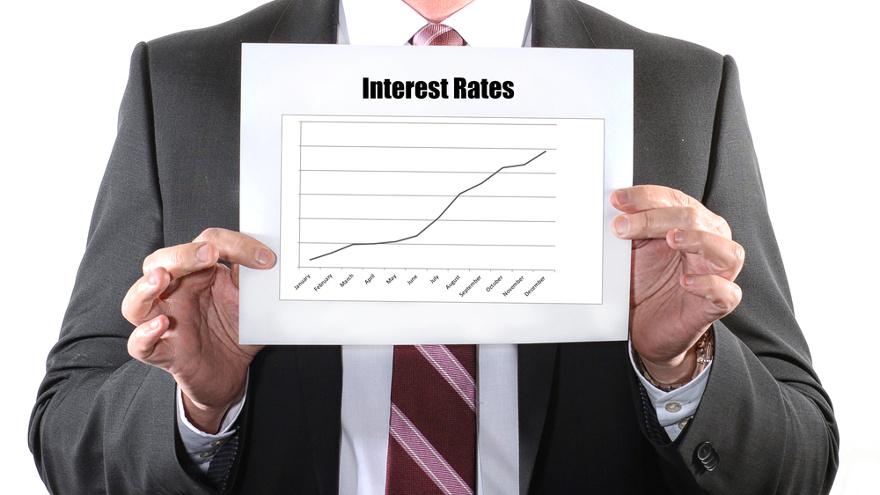Auto finance ramifications of Fed pushing interest rates another 75 basis points higher

By subscribing, you agree to receive communications from Auto Remarketing and our partners in accordance with our Privacy Policy. We may share your information with select partners and sponsors who may contact you about their products and services. You may unsubscribe at any time.
Cox Automotive chief economist Jonathan Smoke made a pair of noteworthy observations following members of the Federal Open Market Committee (FOMC) deciding unanimously to raise the target range for the federal funds rate by another 75 basis points.
“Combined with the increases made in June and July, the Fed has now moved the target rate more in 120 days than at any point since 1981,” Smoke said in a Data Point posted after the Federal Reserve announced its decision on Wednesday.
“With today’s increase and an additional 1.25 points before year-end, financing costs will make purchases more challenging with at least a double-digit increase in hypothetical monthly auto loan payments,” Smoke added.
So why is the Fed potentially making it difficult for dealerships to retail vehicles and finance companies to add to their portfolios? Chair Jerome Powell used the opening statement of his press conference following the decision announcement to reiterate what policymakers are trying to accomplish.
“My colleagues and I are strongly committed to bringing inflation back down to our 2 percent goal,” Powell said. “We have both the tools we need and the resolve it will take to restore price stability on behalf of American families and businesses. Price stability is the responsibility of the Federal Reserve and serves as the bedrock of our economy. Without price stability, the economy does not work for anyone. In particular, without price stability, we will not achieve a sustained period of strong labor market conditions that benefit all.
“My colleagues and I are acutely aware that high inflation imposes significant hardship as it erodes purchasing power, especially for those least able to meet the higher costs of essentials like food, housing, and transportation,” he continued.
Subscribe to Auto Remarketing to stay informed and stay ahead.
By subscribing, you agree to receive communications from Auto Remarketing and our partners in accordance with our Privacy Policy. We may share your information with select partners and sponsors who may contact you about their products and services. You may unsubscribe at any time.
“Reducing inflation is likely to require a sustained period of below-trend growth, and there will very likely be some softening of labor market conditions. Restoring price stability is essential to set the stage for achieving maximum employment and stable prices over the longer run. We will keep at it until we are confident the job is done,” Powell went on to say.
Chief economist Bill Adams and senior economist Waran Bhahirethan, both from Comerica Bank, dissected the data that Powell said the Fed is using to make its decision. Policymakers shared an array of charts, but the Comerica Bank experts focused on one.
“The September dot plot raises the forecast for inflation from the June dot plot, reflecting higher inflation over the last few months, and expectations that inflation will be more persistent in 2023 and 2024,” Adams and Bhahirethan said in an installment of Comerica Insights released on Wednesday afternoon.
“Prior to its September meeting, the Fed had been looking for slower core inflation, lower commodity prices, an end to runaway house price and rent growth and slower wage growth to be convinced that inflation was moving convincingly toward their 2% target,” the Comerica Bank experts continued. “Now their bar is even higher: They want to see the unemployment rate move meaningfully higher to cool the labor market, slow the trend in wage growth, and bring inflation expectations to heel. They would rather overtighten and cause a recession than under-tighten and see inflation re-emerge down the line.”
After making those assertions, Comerica Bank’s next interest rate forecast includes another rate hike of 75 basis points when the Fed has its next chance to make a move in November. The bank is expecting another 25 basis-point jump in December when the Fed conducts its last meeting of the year.
“The target range will hold there until the second half of 2023, when data are likely to meet the Fed’s high bar for beginning to cut interest rates,” Adams and Bhahirethan said.
Turning back to the automotive industry, Smoke agreed with the rate rises Comerica Bank is forecasting, and the Cox Automotive expert who will be appearing again during Used Car Week elaborated about what the development could mean in dealership showrooms and finance company underwriting departments.
“By raising rates, the Fed has forced lenders to follow. Meanwhile, consumers who are most payment sensitive are falling out of the market, and that makes the subprime share fall,” Smoke said in the Data Point. “While the rate movement from the Fed has priced them out of the market, deteriorating economic prospects are also causing lenders to gauge risk as higher. As a result, rate increases for these would-be borrowers are even larger than the Fed’s movements because the yield spread on riskier loans, like loans for used cars and especially to subprime borrowers, is widening, making those interest rates even higher.
“Credit is still available, but it is flowing to a smaller portion of the population, which means demand is shrinking. The consumer has limited ability to get a payment they can afford as they cannot adjust the remaining variables enough to keep payments within reach,” he continued.
“The Fed cannot directly influence inflation in the auto market without doing damage to the industry. With low supply in the new market, prices are still going up. Higher rates will not resolve semiconductor shortages, COVID lockdowns in China, or production challenges,” Smoke went on to say.


